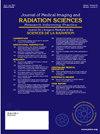人工智能和机器人技术对介入心脏病学放射技师的影响:系统回顾
IF 1.3
Q3 RADIOLOGY, NUCLEAR MEDICINE & MEDICAL IMAGING
Journal of Medical Imaging and Radiation Sciences
Pub Date : 2024-10-01
DOI:10.1016/j.jmir.2024.101533
引用次数: 0
摘要
背景/目的人工智能和机器人技术已成为介入心脏病学领域的变革性力量,可采用新颖的方法应对与治疗世界头号死因相关的复杂挑战。考虑到智能技术不断发展的能力,本综述深入探讨了人工智能和机器人技术不断上升的影响力如何改变放射技术专家的职责和功能。方法采用系统性文献综述来识别、选择和批判性评估研究,以确定人工智能在介入心脏病学中的影响。所查阅的文献来自以下数据库:CINAHL、PubMed、Science Direct 和 Medline。检索仅限于 2013 年至 2023 年间发表的全文英文学术期刊。本系统综述的文献检索采用《系统综述和荟萃分析首选报告项目》报告指南进行。结果导管室人工智能的发展正在彻底改变我们处理和解释血管造影 X 光图像、将其与其他成像模式整合以及改善诊断和管理的方式。智能系统、机器人技术和创新的图像处理技术正在进入介入心脏病学领域,从而大大减少了辐射暴露,同时提高了诊断和管理水平。随着人工智能和机器人技术的应用越来越广泛,放射技师的机会也会越来越多,但他们必须积极参与,以确保自己不会被排除在人工智能系统及其技术的实施之外。本文章由计算机程序翻译,如有差异,请以英文原文为准。
The impact of artificial intelligence and robotics on radiologic technologists in interventional cardiology: A systematic review
Background / Purpose
Artificial intelligence and robotics have emerged as a transformative force in the field of interventional cardiology, enabling novel approaches to address the complex challenges associated with treating the world's leading cause of death. This review thoroughly examines how the rising influence of artificial intelligence and robotics is transforming the responsibilities and functions of radiologic technologists considering the continually evolving capabilities of intelligent technologies.
Methods
A systematic literature review was used to identify, select, and critically appraise research to determine the impact of artificial intelligence in interventional cardiology. The literature reviewed was collected from the following databases: CINAHL, PubMed, Science Direct, and Medline. The search was limited to full-text and scholarly journals published between 2013 and 2023 in the English language. The literature search for this systematic review was performed using the Preferred Reporting Items for Systematic Reviews and Meta-analyses reporting guidelines.
Results
Advances in artificial intelligence in the catheterization laboratory are revolutionizing the way we process and interpret angiographic X-ray images, integrate them with other imaging modalities, and improve diagnosis and management. Intelligent systems, robotics, and innovative image-processing techniques are now making their way into interventional cardiology, leading to significant reductions in radiation exposure while enhancing diagnosis and management.
Conclusion
Radiologic technologists must continue to adapt and grow in response to the ever-evolving capabilities of intelligent technologies. As the adoption of artificial intelligence and robotics increases so too will the opportunities for radiologic technologists, but they must actively engage and participate to ensure they are not excluded from the implementation of artificial intelligence systems and the technologies they enable.
求助全文
通过发布文献求助,成功后即可免费获取论文全文。
去求助
来源期刊

Journal of Medical Imaging and Radiation Sciences
RADIOLOGY, NUCLEAR MEDICINE & MEDICAL IMAGING-
CiteScore
2.30
自引率
11.10%
发文量
231
审稿时长
53 days
期刊介绍:
Journal of Medical Imaging and Radiation Sciences is the official peer-reviewed journal of the Canadian Association of Medical Radiation Technologists. This journal is published four times a year and is circulated to approximately 11,000 medical radiation technologists, libraries and radiology departments throughout Canada, the United States and overseas. The Journal publishes articles on recent research, new technology and techniques, professional practices, technologists viewpoints as well as relevant book reviews.
 求助内容:
求助内容: 应助结果提醒方式:
应助结果提醒方式:


